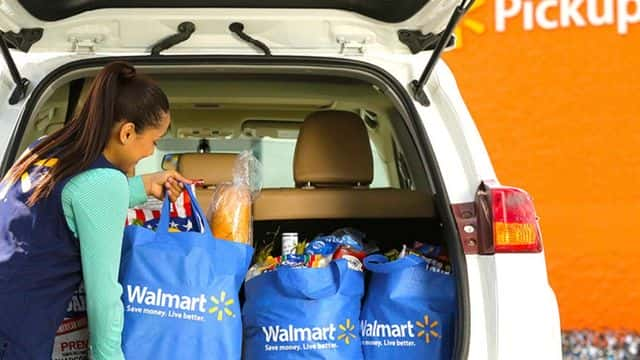For a $5 million competitive award, the U.S. Department of Agriculture (USDA) is looking for applications to increase the number of businesses that allow SNAP beneficiaries to buy groceries online.
The SNAP EBT Modernization Technical Assistance Center grant will enable an organization to provide “extensive support” to retailers with the technology and systems required to support SNAP e-commerce, the USDA said yesterday.
This will allow SNAP participants to access a wider variety of retailers while shopping for groceries online. The American Rescue Plan stimulus legislation from last year, which was passed, provides funding for the program.
Stacy Dean, deputy undersecretary for food, nutrition, and consumer services at USDA, said in a statement that online grocery shopping is a crucial resource that increases access and convenience for everyone, particularly low-income families.
“We are enthusiastic about the potential for this funding to give new and current retailers tools to redeem SNAP benefits in ways that improve the customer experience for SNAP participants, especially those who encounter hurdles in going to a physical store,” the statement reads.
According to the USDA, the earliest food shops offering SNAP online purchases were often big chains with well-established e-commerce systems that could be used as a foundation.
When launching new e-commerce sites or updating existing ones to comply with SNAP’s online purchasing regulations, many shops, especially smaller operators, encounter technological difficulties or a lack of funding.

Instacart orders from Sprouts can now use SNAP EBT payments.
Smaller, independent food stores that accept SNAP will be able to provide online purchases thanks to the award, according to USDA, which intends to facilitate technological support.
The government also stated that it aims to increase the number of retailers that offer online grocery shopping to give SNAP participants more options, better serve rural populations, and accommodate cultural cuisine preferences.
Grant recipients will be announced in the fall, and all applications must be submitted by September 6 at the latest.
The USDA also said that the award is a part of initiatives to update SNAP and make sure that participants have access to the same purchasing options as non-SNAP supermarket shoppers.
For this purpose, the agency announced it is creating a pilot program that would let SNAP recipients use their smartphones to pay for groceries at the register and will shortly start recruiting states to join the initiative.
The objective is to make it possible for SNAP users to input their electronic benefit transfer (EBT) card into a mobile device and make SNAP purchases at the point of sale without having their EBT card with them.
By the SNAP Online Purchasing Pilot, which the USDA’s FNS introduced in April 2019, SNAP recipients are now permitted to shop and pay for groceries online in 49 states (apart from Alaska) and the District of Columbia.
Only three grocery stores nationwide—Amazon, Walmart, and Aldi—allow SNAP customers to shop for groceries online.
For online grocery orders placed with several chains, including those placed through Instacart, as well as Amazon, SNAP EBT payments are also accepted.
Read more:-
- The US and Chinese Senior Diplomats Undertake ‘Productive’ First Discussions in Months
- As Per An Opinion, the Comey and McCabe IRS Audits Are a Red Flag That Has a Lengthy History
- Store Manager in Birmingham Enters a Guilty Plea to Food Stamp and Tax Fraud
A significant increase from March 2020, when only about 35,000 SNAP households used the internet to shop, to May 2022’s just over 3 million households using the program, according to USDA data The department stated that the increase in users is a reflection of the pilot program’s quick expansion, which included the addition of about 130 retailers, representing thousands of stores, over the last two years.
As stated by Cyrus Huncharek, a senior public policy analyst at the National Disability Rights Network, “SNAP online purchasing is particularly important to the communities we serve due to continued fear of contracting COVID-19 in a grocery store, the risk of exposure to other transmissible diseases, accessibility issues both in-store and with transportation, and pre-existing burdens on family caregivers.” We value USDA’s care and management of this essential technical assistance.


